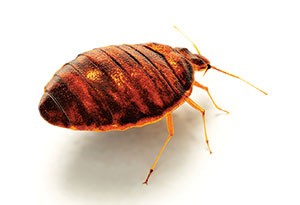
The rate of re-infestation dramatically slows control efforts in apartment communities
like this one. Photo: ©istock.com/knapjames
When there’s a direct cost to tenants for bed bug control, reporting is delayed.
Early detection is the key to controlling bed bug costs in multiple-dwelling communities.
By now, we’ve all heard about apartment communities with bed bug infestations so widespread that it threatens the apartment community’s existence. Costs for bed bug control can exceed a customer’s ability to keep up with control efforts. This usually occurs because the rate of re-infestation dramatically slows the progress of control. When this happens, there are usually a number of heavily infested units.
Heavy infestations work against community control efforts in three ways:
1. Bed bugs are carried to many other locations, but are more likely to start new infestations in places frequented by that tenant.
2. If the new infestations are left undetected or untreated long enough, these concurrent infestations can feed each other and hinder any control efforts that may be implemented. If these locations are in the same apartment building, the problem is compounded.
3. When a population becomes so big that bed bugs are dispersing at all times, they might disperse to adjacent units. Sometimes they walk up and down the halls. It’s also common for the occupants of heavily infested units to discard furniture in hopes of eliminating or reducing their misery. Unless proper disposal procedures are used, a full-blown infestation might be simply carried into another unit.
Heavy infestations are much more difficult to control, and not simply because of the concurrent infestation effect. The chances for survivorship increase when more insects are present; this seems to be true for heat treatments and contact insecticide treatments. The result is more and heavier infestations. Detecting and controlling bed bugs before populations get out of control has a multiplying effect on community control efforts.

A step-by-step, comprehensive program is the best approach for communities with bed bugs. Photo: ©istock.com/animatedfunk
The real cost of charging residents
To control costs, many apartment communities charge tenants for all or part for the cost of bed bug treatment. It’s believed if tenants have to pay for bed bug treatment, they’ll be more careful, resulting in fewer infestations and defraying costs. While this seems logical, the reality is the opposite.
If there is a cost for tenants to report, several things happen. First, they might ignore the signs of early infestation. It’s human nature to equate payment delayed with payment avoided.
When the bugs can no longer be ignored, tenants first try to do it themselves. Between the Internet, inaccurate media reports and hearsay, one can get advice on any subject imaginable. But home remedies almost always result in small infestations that grow into medium or heavy infestations.
Do-it-yourself efforts usually continue until someone else discovers the bugs. It’s become typical for a crew inspecting adjacent units to come across a relatively severe infestation in a unit where the tenant had denied ever seeing any. I witnessed one account in which the condo association didn’t know there were bed bugs in the unit until they were seen on the hazmat suits of the emergency medical technicians removing the body of the occupant who had passed away.
This is why it’s a best practice to always inspect adjacent units. For those adjacent to heavy infestations, interceptors can be left to monitor bed bug movement. While a live bed bug doesn’t necessarily indicate an infestation, it might indicate an introduced bed bug.

A community inspection should include canine detection after move-ins and move-outs. Photo: ©istock.com/Modfos
Costs for the tenant aren’t always monetary. Overly burdensome preparation requirements can be as daunting to tenants as a bill. Requiring all their clothes be laundered can cost them in both labor and laundering. If the tenant must use a laundromat, there are transportation costs as well.
What’s the solution?
A bed bug program for an apartment community should have three objectives:
1. don’t move them in;
2. find them and deal with them early; and
3. stop them from spreading.
A community program should also include canine inspections after move-outs, move-ins, and in regular inspections to identify light infestations before they get out of control. A complete sweep of all units at the outset of the program will characterize the level of infestations, and identify any heavy infestations that are present. This requires access to certified teams of well-trained and -maintained dogs. This can be a challenge, but how to choose canine teams is a topic for another column.
Another essential component is support for tenants who might not be capable of proper preparation by themselves. A set procedure for the discard of infested furniture is vital for heavily infested communities. Providing the personnel to come to a unit, contain the infested piece, and remove it to a secure disposal site can go a long way toward reducing the spread of bed bugs.
Finally, building a program for an apartment community must begin with education, so all principal groups (administration, staff and tenants) can participate. Even in cities with a lot of bed bug activity, an apartment community can achieve an effective level of control and maintain it long-term. Putting such a program together might seem complicated or expensive, but over time, it will reduce the costs of bed bug management. A step-by-step, comprehensive program is the best approach for troubled communities.
You can reach Mark Sheperdigian, BCE, at shep@rosepest.com.
Thank you for this! Very accurate information! We treat lots of apartments in Los Angeles, and we try to stay out of the fight between landlords and tenants but it is not always possible! California is about to finally pass a law that makes the landlord take financial responsibility, I believe that will go a long way to help! We will just have to see!